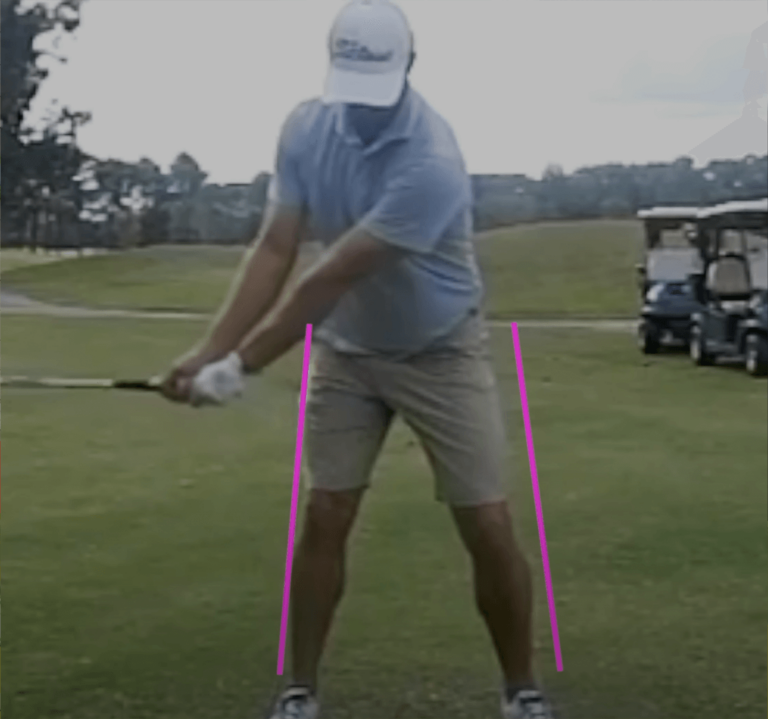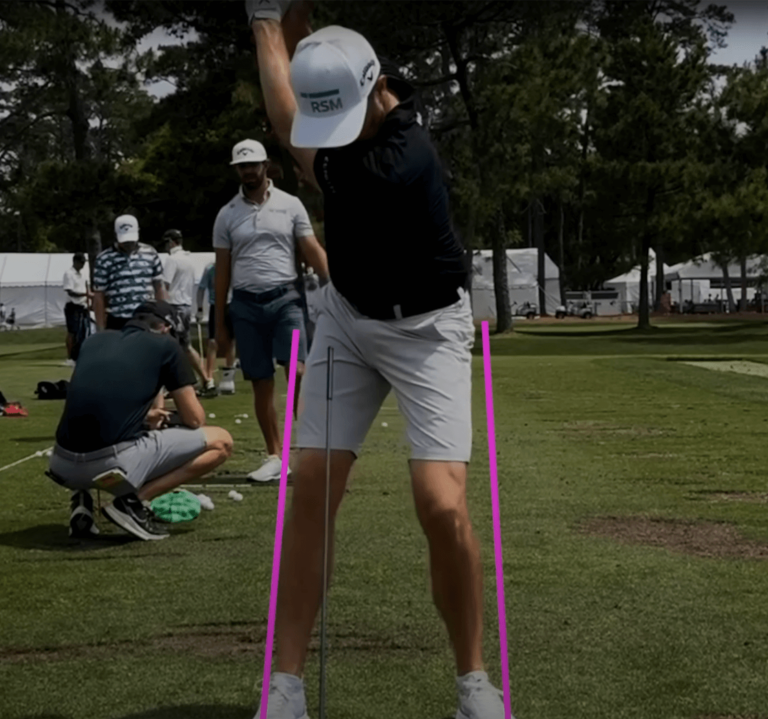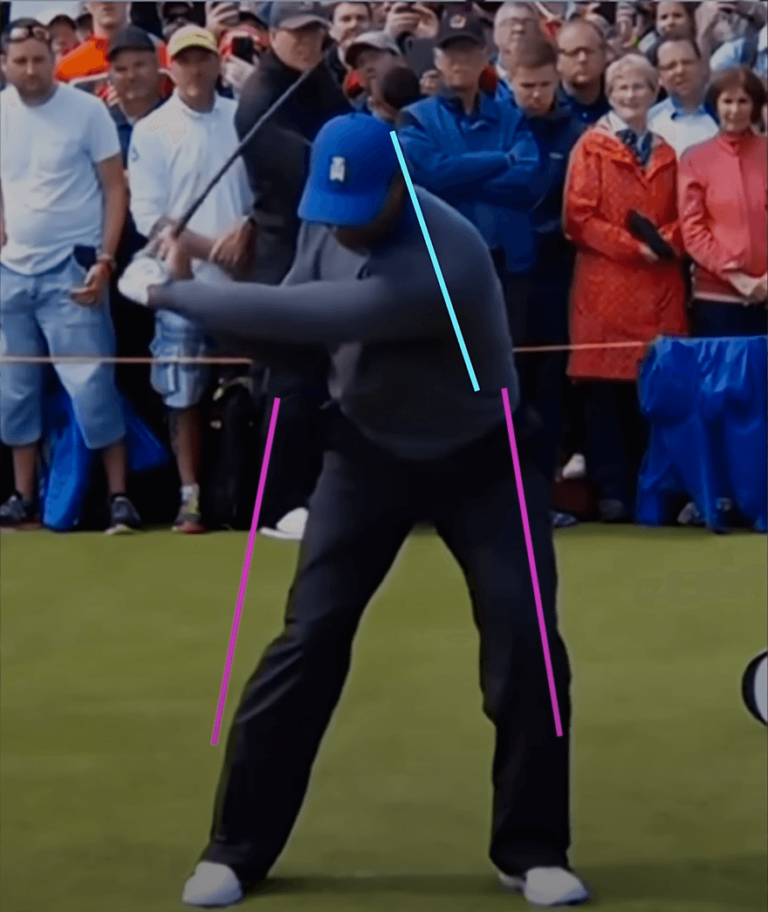Sold Out
Mastering Golf's Re-Centering Technique
Struggling with re-centering in your golf swing? Learn the common mistakes and key techniques to master this crucial move, ensuring a smoother and more effective downswing.
Introduction
Re-centering—a term you've likely heard tossed around in golf circles—can be a game-changer when executed correctly. However, getting it wrong can do more harm than good, leading to a less controlled downswing and a frustrating day on the course. Whether you're just starting to work on this technique or you've been trying to master it for a while, understanding the nuances of re-centering is crucial. In this guide, we’ll break down the essentials, cover common pitfalls, and share insights from top players to help you nail this technique.
What is "Re-centering" in Golf?

(Click here to watch the video version of this blog post)
Re-centering refers to the subtle shift of weight from your trail side back to the center of your body during your backswing and transition into the downswing. It's a critical move that helps set up the proper sequencing for a powerful and controlled downswing. If done correctly, re-centering can lead to better rotation, posting up on your lead side, and ultimately, a more effective strike on the ball.
Common Mistakes Golfers Make with Re-centering
Despite its importance, many golfers struggle with re-centering. Here are some of the most common mistakes:
1. Overusing the Upper Body: Many golfers try to re-center by shifting their upper body instead of their lower body. This often results in a steep downswing, leading to mishits and inconsistent ball striking.

(Demonstrating improper re-centering by leading with the upper body)
2. Bouncing Off the Trail Side Too Quickly: Some players make the mistake of moving too quickly from their trail side, almost like bouncing off a trampoline. This can throw off the timing and rhythm of the swing, causing poor contact with the ball.
3. Overdoing the Shift: While a small shift is necessary, overdoing it can lead to an off-balance swing. Too much movement back to the center can cause you to lose your posture, making it difficult to maintain control throughout the downswing.
The Correct Way to Re-center: A Step-by-Step Guide
Let’s walk through the proper way to execute re-centering:
1. Start with a Shift to the Trail Side: As you begin your backswing, allow a small shift of your weight to your trail side. This move should be subtle—just enough to feel the weight on your trail foot.

(Adam Scott shifting away from the target early in his backswing)
2. Hold the Position Briefly: Once you’ve shifted to the trail side, hold this position as you complete your backswing. The clubhead should be farthest from the target when you’re in this position.
3. Re-Centering: As the club reaches the top of your backswing, start to shift your weight back to the center. This movement should be initiated by your lower body, not your upper body. Think of it as your pelvis moving back to its starting position, carrying your upper body along with it.

(Re-center your hips at the top between the starting lines)
4. Maintain Your Posture: As you re-center, be mindful of maintaining your posture. Avoid the temptation to lean forward or tip your upper body toward the target.
5. Prepare for the Downswing: By the time you’ve re-centered, you should feel balanced and ready to initiate your downswing. Your weight should be evenly distributed, setting you up for a powerful and controlled strike.
Pro Tips: How Top Golfers Perfect Re-centering
Watching professional golfers can provide invaluable insights into mastering re-centering. Here’s how some of the best in the game do it:

(Chris Kirk re-centered at the top of his backswing)
Subtle Movements: Golfers like Adam Scott and Chris Kirk execute re-centering with minimal, almost imperceptible movements. This subtlety is key to maintaining balance and rhythm throughout the swing.
Timing is Everything: Top golfers time their re-centering to coincide with the transition at the top of their backswing. This timing helps them maintain their flow and ensures a smooth transition into the downswing.
Maintaining the Backline Angle: As players like Robert Rock and Jon Rahm re-center, they maintain a slight tilt in their backline, away from the target. This posture helps them avoid tipping forward and keeps their swings on plane.

(Tiger Woods maintaining his backline early in his downswing)
Practical Drills to Improve Your Re-centering Technique
Improving your re-centering technique can be done with a few simple drills:
1. Eyes-Closed Drill: Stand in your address position with your eyes closed. This will heighten your sense of balance. Shift your weight to your trail side as you start your backswing, then feel the shift back to the center as you transition. This drill helps you become more aware of your weight distribution and improves your ability to execute subtle shifts.
2. Chair Drill: Place two chairs on either side of your hips while you set up for your swing. As you take your backswing, allow your trail hip to lightly touch the chair on your trail side. When you start to re-center, avoid pushing into the chair on your lead side. This drill provides physical feedback, helping you understand the right amount of shift needed.

(Shift into the right chair at the start of your backswing)
3. Video Analysis: Film your swing and draw lines outside your legs. This visual feedback will help you see if you're re-centering correctly. The goal is to return to the center between those lines as you transition from your backswing to your downswing.
Frequently Asked Questions (FAQs)
Why is re-centering important in golf?
Re-centering is crucial because it sets up the correct sequencing for your downswing. It helps you maintain balance, control, and power, leading to more consistent ball striking.
Can I overdo re-centering?
Yes, overdoing re-centering can throw off your balance and timing, leading to mishits. The key is to make a subtle shift rather than a large movement.
How can I tell if I'm re-centering correctly?
Filming your swing and analyzing it with visual aids like lines can help. Additionally, paying attention to your balance and how your body feels during the transition can give you clues about whether you're doing it right.
Wrapping It Up
Mastering re-centering is all about subtlety and timing. By avoiding common mistakes and focusing on the correct technique, you can significantly improve your swing and overall game. Remember to practice these moves slowly at first, using drills and video analysis to guide you. With time and consistent practice, re-centering will become a natural part of your swing, helping you achieve that smooth, powerful downswing that every golfer strives for.
